Tough Decisions – Tactical and Strategic
Owning a transformer means making many big-money decisions, but those decisions aren’t always clear or straightforward.
Assessing Your Transformer: Questions to Ask
- How do I determine if my transformer is healthy? What criteria should I use?
- How do I interpret each reading?
- What’s most important for me to monitor?
- How do I determine which transformer is the most critical to replace this year? The oldest, unhealthiest or the one with the irritating fill-in-the-blank alarm?
Transformer owners need to consider two types of questions: tactical and strategic. Without a harmonious approach to these questions, it’s impossible to understand the true health of a transformer, and whether or not it’s meeting the needs and demands your organization requires. Tactical goals may include questions such as, ‘can I return a transformer for service after a fault, or do I need to schedule an immediate corrective or verification action?’ Strategic goals revolve around lifespan, capacity, budgeting and monitoring equipment.
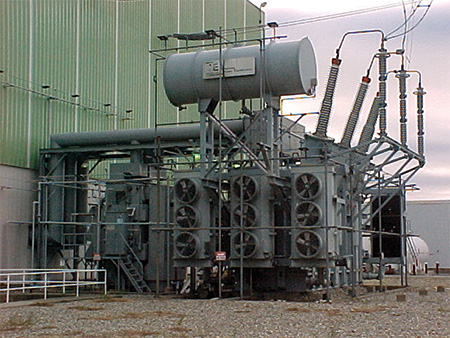
Figure 1: 650 MVA GSU
Online testing, monitoring and evaluation tools are still new to the industry when you consider transformers have been used for over a century, but these tools have slowly become mainstream over the past 10 years. Without discounting the value of off-line testing, power organizations and testing equipment companies have recognized one very critical issue that needs a solution: Things change more rapidly than off-line only testing allows us to detect.
In the early years of transformer application, transformers were bigger and more substantial than they are currently. Put simply, transformers were generally overdesigned, resulting in low transformer failure rates and the expectation that units would last decades. With advances in transformer manufacturing, the margin of overdesign has reduced to the point where it is almost non-existent. Now, thanks to tighter tolerances, the old school approach to letting transformers stay in service indefinitely is fraught with peril. The built-in insurance of overdesign is simply gone.
The political and economic environment has also changed. Regulators now require utilities to prove their worth when it comes to financial rate changes, environmental impact, customer up-time, reliability and public safety. Utilities need to use tools that are much faster, more tactical and that constantly generate data through online systems to meet these requirements.
Transformer owners are working hard to ascertain and digest the right data to make critical decisions confidently, but the volume of data is overwhelming and is complicating matters. What looks like a critical piece of information at first glance could easily be a diversion with no real importance. Having the appropriate tools and solutions in place to help navigate all the available data is the best way to simplify the process and ensure the real red flags are addressed quickly.
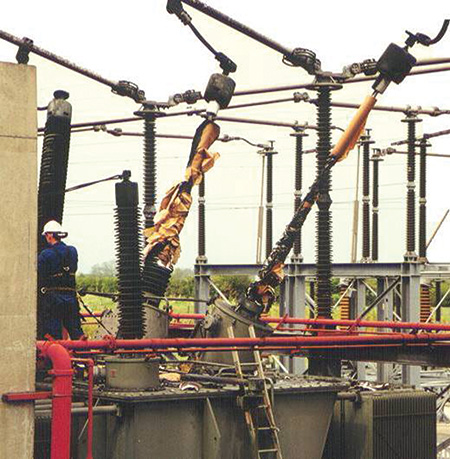
Figure 2: Poor Condition Transformer
Facing (and Preventing) your Fears: Catastrophic Failure
Figure 2 shows a catastrophic bushing failure – in other words, one of a transformer owner’s biggest fears. In this case, the explosion resulted in additional collateral damage – the adjacent bushing was lost and shock waves were sent through the main transformer tank. This bushing could have been saved with appropriate condition monitoring, as part of an asset management program.
Let’s now take a look at the benefits and applications of risk and condition monitoring tools.
The Case of the GSU Bushing
To better understand how to simultaneously tackle both strategic and tactical goals, let’s review a real-world example of a Generator Step Up (GSU) transformer and see if the right questions were asked and if the decisions made were correct.
The GSU transformer in Figure 1 looked to be in good condition based on off-line tests prior to 2003, but performance outside those tests was largely a mystery… until the company adjusted its transformer health strategy.
In this case, a 345/26 kV 968 MVA GSU, manufactured in 1984, supplied power via a DC link to a large city in the United States. The bushings were known to have a design flaw that led to a specific failure mode with characteristic changes in leakage current and online power factor. If monitored online, these symptoms can be identified before a catastrophic failure occurs. For this GSU, a bushing monitor was installed in order to record the raw current and derive the required parameters, and provide notifications of bushing deterioration.
After several months of normal operation, the monitor showed a small but significant change in the relative phase angle associated with the H3 bushing over a period of three days. This was followed by a further variation of over 2 degrees in seven hours, along with a rise in leakage current magnitude of over 8 percent.
These may seem like small variations, but they are actually huge changes in a very short amount of time. High level alerts were received by system operations from the monitor and previously planned and agreed upon actions were taken: the transformer was removed from service and the bushings tested off-line, validating the online results. The leakage current data is summarized in normalized form in Figure 3. The rapidly deteriorating situation is clear.
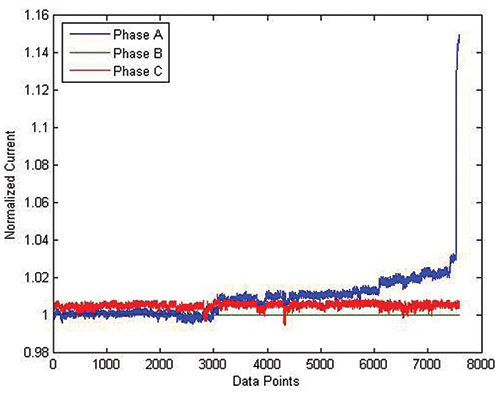
Figure 3: Rising leakage current data
A subsequent forensic analysis of the bushing showed advanced deterioration and punctures in the insulation. Though impossible to say how long the bushing had before failure, this bushing had obviously moved away from ‘normal’ and was heading toward the same catastrophic failure seen with similar units. Appropriate condition monitoring provided data for a tactical asset management decision. The bushing was replaced, and the GSU likely saved from destruction.
The Benefits of Online Monitoring
Condition monitoring should be based on a simple initial question: What problem are we trying to solve?
If we are looking to monitor the general health of a transformer, then general use monitoring, including DGA (Dissolved Gas Analysis) and temperatures may be sufficient. This will not detect all potential problems, and there is still the risk that certain failure modes can occur without warning.
When it comes to more comprehensive monitoring, you will need a bushing PF/TanDelta, operational (SCADA), Partial Discharge (PD) and a means to correlate data and develop an asset health index (AHI) for a transformer. An AHI, if developed and used properly, can be a valuable guide to tactical intervention and action. If there are particular issues with a transformer – suspect bushings or a tap changer prone to rapid thermal deterioration – targeted condition monitoring would be included in the application of an advanced suite of tools.
The best approach for condition monitoring is to use a flexible monitoring platform that can gather and analyze data at an individual station, while also providing a comprehensive view of all transformers. A platform that aggregates data across different transformers to data-mine the larger data set and seek out anomalous behaviour is a powerful approach to data collation and analysis. However, there also needs to be a degree of understanding on the part of the user. Otherwise, the whole system falls apart and it’s just another protocol that collects dust on the shelf. Agreed response and action plans should be in place before a monitoring platform provides alerts, alarms or notifications: working out what to do in the middle of an event is always more difficult!
By implementing a cost-effective, targeted and financially justified system, an organization enables technicians, engineers and managers to better understand their assets, manage asset condition and prevent unplanned outages.
The Case of the Aging Fleet – Where to Concentrate?
Managing a fleet of transformers is a challenge – it really means managing a lot of transformers individually, but simultaneously using the statistics of the population and financial limitations to help drive priorities and decisions. A population may have a historic failure rate – One percent of the population fails annually, for example – but that statistic applies to the population as a whole and is only an indication for a particular transformer.
Aging implications for any given transformer population is key to effective analysis. With all assets aging nominally at the rate of one year per year, some may be ageing more quickly due to higher impact of through-faults or through more tap changer operations or by having more thermal deterioration of paper insulation. This information should be factored into the health analysis for individual transformers and also used to prioritize and identify candidates for replacement. Figure 4 shows a predicted failure rate rising with transformer age, based on statistics shared by Hartford Steam Boiler Insurance Company.
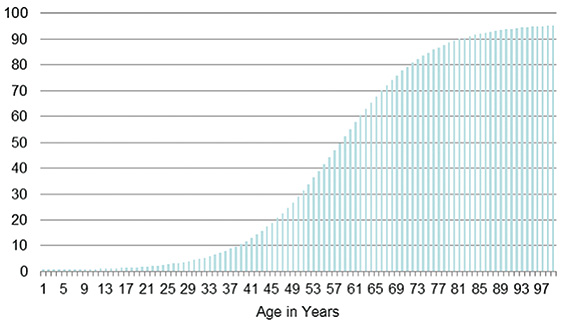
Figure 4: Cumulative Failure Rate for Power Transformers in North America.
(Data presented at the 2012 International Conference of Doble Clients).
There is a predicted rise in failure rate as transformers reach about 50 years of age – the age which many in-use transformers are currently approaching -- but the statistics available vary between organizations and on a year to year basis.
A large fleet allows for statistically relevant analysis. Looking at 1,000 transformers with a historic failure rate of 0.5 percent, we can expect, over the coming year, five failures. Regardless, determining which transformers will fail remains a very difficult question to answer. It is important to review the manufacturer, design and data from industry sources to understand all possible contributing factors.
Considering off-line bushing power factor tests, we can see that in 2012, North America alone tested over 45 thousand bushing C1 insulations systems. Of these, over 1.5 percent were in bad condition and required replacement – where the power factor was above 1 percent or had doubled since installation. It is more difficult to replace a whole power transformer, as the capital costs are high and the lead time is long.
Case Study in Online Monitoring
To obtain a deeper understanding of asset health, a large investor owned utility, located in the Midwest of the United States, recently undertook a project of installing online monitors to improve their tactical awareness of asset condition. This initiative was coupled with an implementation of the platform dobleARMS to integrate their offline testing data, their online monitoring data and their SCADA data into one centralized system that will monitor the risk associated with their assets. This automated process provided new data points, generated from the online bushing monitoring and online DGA monitoring, and integrated the existing SCADA points into the risk management system.
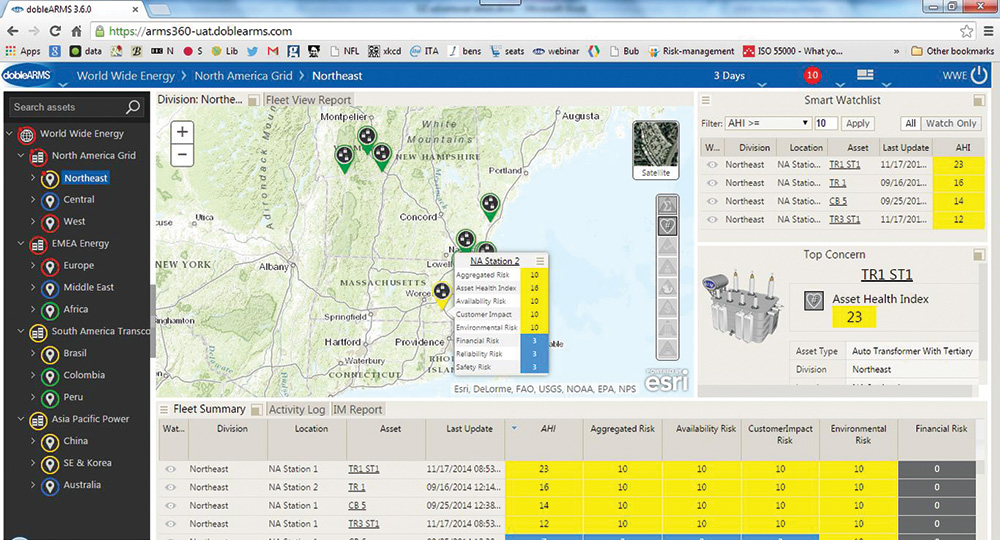
Snapshot of dobleARMS AHI Fleet View Report, map view
This continuous process, in parallel with available offline test results, were automatically supplied to the system as they became available in the test database. The system was able to monitor the assets in real time and update the utility’s asset management and operations management as to changes in the health and risk of an asset. Understanding asset health and risk is very important to the utility, as well as having a system powerful enough to warn them when something needs their attention, with an indication of the timescale and intervention planned.
Tools for Strategic Planning and Intervention
An asset risk management system is critical to showing an entire fleet’s health and risk at-a-glance. In the case provided above, ranked asset health scores allowed for the utility to identify work priority and subsequent critical analysis helped to identify the consequences of failure and aided in scheduling work to mitigate the risk. Bringing data together - and making it readily available - is a key to enabling tactical and strategic decision making.
So – the tough decisions:
- Which transformers should be targeted for replacement, in what timescale, and with what justification?
- How do we manage the risk associated with those units before they are replaced?
Managing a population is best achieved through a consistent and standards based approach, reflecting the priorities of the standard for Asset Management ISO 55000 and the needs of the organization.
There are a number of purported asset risk management tools available, but a comprehensive tool that accepts criticality metrics for safety, environmental impact, business interruption and financial loss, and is calibrated through a common denominator to ensure cohesion of analysis and results, is imperative. By ensuring that we keep track of the original risk quantities, transformer owners, managers and operators, we can address risks as they develop and manage plans for intervention.
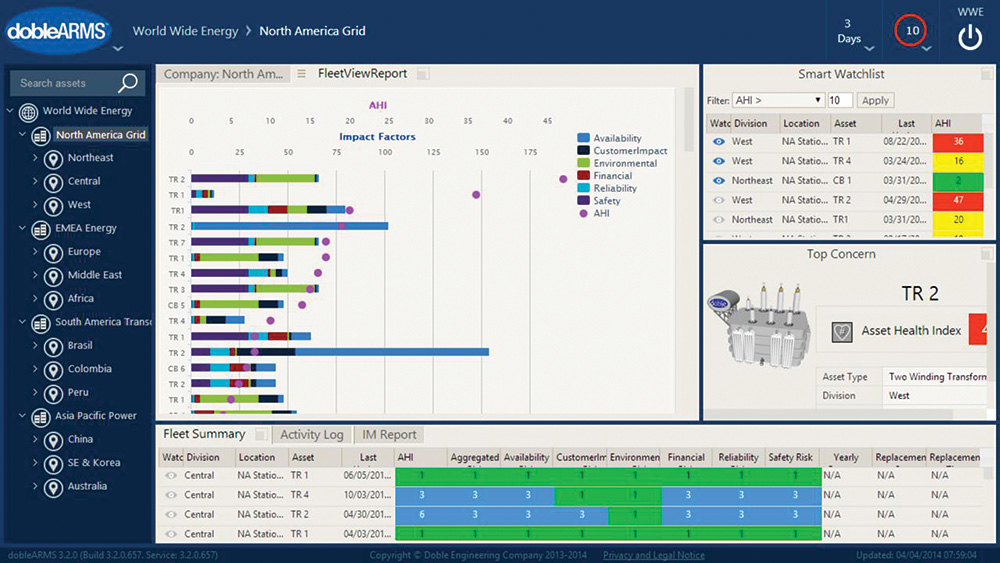
Snapshot of dobleARMS AHI Fleet View Report, Impact Factors
Conclusions
There are tough decisions to be made for short term individual transformer reliability and transformer population management for the long term.
Condition monitoring is applied at the station level to generate decision supporting data with respect to transformer health and viability – an asset health index and anomaly identification. It’s imperative to utilize available tools to make decisions with confidence in the face of operational contingencies and target responses in a timely manner.
Asset management of a population is a complex activity, and requires a view of the individual transformers within the context of the fleet and individual business requirements of each transformer. Combining both tactical and strategic tools optimizes an organization’s use of critical and expensive assets, allowing for timely and cost effective intervention, improving understanding of asset health and providing consequent grid reliability improvement.
About the Author
 Tony McGrail is Doble Engineering Company’s Solutions Director for Asset Management & Monitoring Technology, providing condition, criticality, and risk analysis for utility companies. Previously Tony spent over 10 years with National Grid in the UK and the US; he has been both a substation equipment specialist, with a focus on power transformers, circuit breakers and integrated condition monitoring, and has also taken on the role of substation asset manager and distribution asset manager, identifying risks and opportunities for investment in an ageing infrastructure. Tony is a Fellow of the IET, a member of the IEEE and the IAM, is currently chair of the Doble Client Committee on Asset and Maintenance Management and a contributor to SFRA and other standards at IEEE, IEC and CIGRE. His initial degree was in Physics, supplemented by an MS and a PhD in EE and an MBA. Tony is an Adjunct Professor at Worcester Polytechnic Institute, MA, leading courses in power systems analysis.
Tony McGrail is Doble Engineering Company’s Solutions Director for Asset Management & Monitoring Technology, providing condition, criticality, and risk analysis for utility companies. Previously Tony spent over 10 years with National Grid in the UK and the US; he has been both a substation equipment specialist, with a focus on power transformers, circuit breakers and integrated condition monitoring, and has also taken on the role of substation asset manager and distribution asset manager, identifying risks and opportunities for investment in an ageing infrastructure. Tony is a Fellow of the IET, a member of the IEEE and the IAM, is currently chair of the Doble Client Committee on Asset and Maintenance Management and a contributor to SFRA and other standards at IEEE, IEC and CIGRE. His initial degree was in Physics, supplemented by an MS and a PhD in EE and an MBA. Tony is an Adjunct Professor at Worcester Polytechnic Institute, MA, leading courses in power systems analysis.







